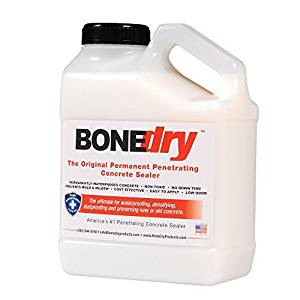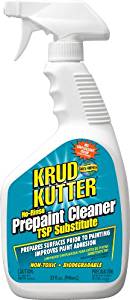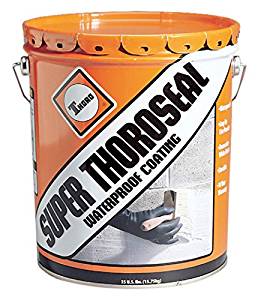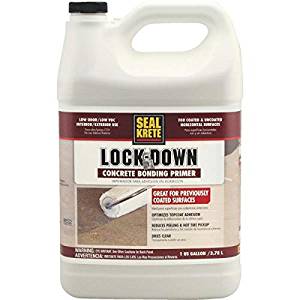- No Obligations
- Stop Paying Too Much For Your Contractor
- No Spam Calling
- Screened & ID Checked Contractors only!
How to Paint Concrete: Practical Tips & Products to Use
0
 How to Paint Concrete: Practical Tips & Products to Use
earlyexperts.net
How to Paint Concrete: Practical Tips & Products to Use
earlyexperts.net
Some people love concrete, others hate it, but most of us take the building material for granted. We have come to expect modern buildings and homes to be built entirely of concrete, or at least have some elements within the construction. The muted gray color of natural concrete is accepted as the default setting.
However, it doesn’t have to be like that. Modern concrete can include pigments to give it color, or the surface can be painted to give it a bright contemporary look. Which is fine when constructing a new building. However, for older properties sprucing up concrete floors, walls or driveways painting the surface does have its advantages. Using concrete paints and stains can mask the wear and tear on a concrete floor or driveway, and hide any discoloration from oils or water, and thus prevent further damage and thus extend the life of the concrete. Concrete that has been coated in some way can also make it easier to be cleaned and maintained.
If it is so good, I hear you say, why isn’t everyone doing it? Well, the answer is that it’s not as simple as slapping some paint on the floor, and is certainly not as easy as painting drywall. As concrete is a porous material, it is inclined to absorb moisture and paint, and that stops the actual paint adhering to the surface. So to paint concrete the surface needs to be carefully cleaned and prepared before painting can begin.
Indoor Concrete Floors and Walls
The first thing you must do before painting concrete is to check if there is any moisture, or if the surface has been treated with a sealant. Both can hamper the application of paint and stop it adhering properly to the surface.
Moisture:
There is a simple test to check if the concrete has a problem with humidity or a more serious vapor barrier issue. Tape a square of plastic sheeting about 2ft by 2ft to the dry concrete. Allow it to sit there for at least a couple of days, and then remove the sheeting to look for moisture condensation. If there is no beaded moisture on the plastic the dampness problem will be down to a ventilation problem, so improving the airflow through the area and controlling the temperature should fix the issue.

However, if there are water droplets on the plastic sheeting, this is a sign of a faulty or missing vapor barrier. If the moisture is a cause for concern, then you should consult a concrete professional. However, you can do the remedial work yourself by using products such as Bone Dry.
The check to see if the concrete you want to paint has been sealed is very easy indeed. Just sprinkle some water on the surface. If the water is absorbed into the concrete, then it has not been sealed. If the water forms little beads or droplets, then it has been sealed with a moisture barrier, and this will need to be removed with acid etching before the surface can be painted.
Cleaning:
Next comes the most important cleaning of the concrete. The paint won’t bond if the surface is dirty or has oil and rust spots. Any untreated stains can seep through the paint and ruin the finish.
Use a high-pressure hose to remove any dirt and debris on the surface of the concrete. Then take a hard-bristle broom and scrub the surface to get rid of ground in dirt.
The next step is to apply an acid wash to the surface to clean it thoroughly. As you are dealing with an acid product, then it is essential to take the necessary safety precautions by wearing safety gloves and a respirator in a closed environment. To get rid of the grease and dirt scrub the surface with a dilute solution of trisodium phosphate using a stiff broom. One of the alternative products that are more environmentally friendly is Krud Kutter’s pre-paint cleaner. Once the acid has had time to do its work, hose off the concrete and allow to dry.

With a clean concrete surface, it is now time to prepare it for painting. We need to get a good bond between the concrete and the paint, so the surface needs to be etched. To do that a product like Krud Kutter Concrete Clean & Etch will do the job. Follow the instructions on the correct dilution in water, and then apply in the same way as you did the acid with a hard-bristle broom. Once the surface has been etched, wash with water and allowed to dry.
Remedial Repair:
For indoor surfaces, it’s important to seal the surface of the concrete to stop any moisture penetration. It will also stop mold growth, and the cold, damp feeling in the space when moisture is present. A masonry sealer such as Thoroseal will also patch up any cracks to give a smooth surface.

Check the manufacturer’s recommendations for mixing and applying as each sealer can be different. The makers of Thoroseal recommend two coats, with up to a week between applications to allow the product to cure completely.
Priming:
The final stage before painting is the priming of the concrete surface. A concrete primer will fill the pores in the concrete giving a more even surface. Seal-Krete’s Lock-Down concrete bonding primer is typical of the products available to prime the surface of a concrete floor, for example.

Check with the manufacturer about drying time, but most take at about two hours to dry completely, and need another eight hours or overnight before you can apply paint to the surface.
Painting:
If you are painting an interior concrete floor, for example, then it’s a good idea to mask the surrounding areas, so you get a straight cut edge, and you get no over painting onto other surfaces. Paint for concrete is called masonry paint or elastomeric paint.
This type of paint contains chemical binders that help the paint contract and expand with the concrete so it will not crack and peel. It is much thicker than regular paint, and therefore is very difficult to spray, and is best applied with a brush or roller. As you have it the area masked off, use a wide brush to paint the edges, so they are sharp and clean.
The use a textured roller to cover the main area of concrete. Try not to paint yourself into a corner, and start the furthest away from the door, and paint toward your exit. You will need to apply two or three coats, allowing a day between each coat. Once the paint is dry, you can apply a sealant if required.
Exterior Concrete Driveways and Patios
When painting external concrete, you can follow the basic steps for internal concrete. First, clean the surface with a pressure washer, and then use the an etching primer to clean the surface ready for painting. Exterior driveway paint is heavy duty and much thicker than ordinary paint so can be difficult to apply straight from the tin. To get a good first coat its advisable to dilute the paint ten to one, ten parts paint to one part mineral spirits. This makes the application of the first coat easier and allows the paint to bond with the concrete surface.
After applying the first coat, allow at least 16 hours before applying an undiluted second coat. You must then allow another seven days before driving on the driveway or walking on your patio.











